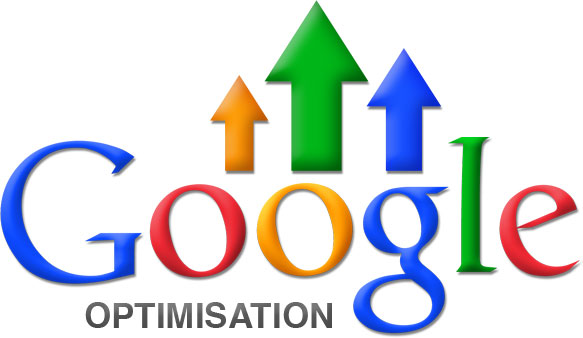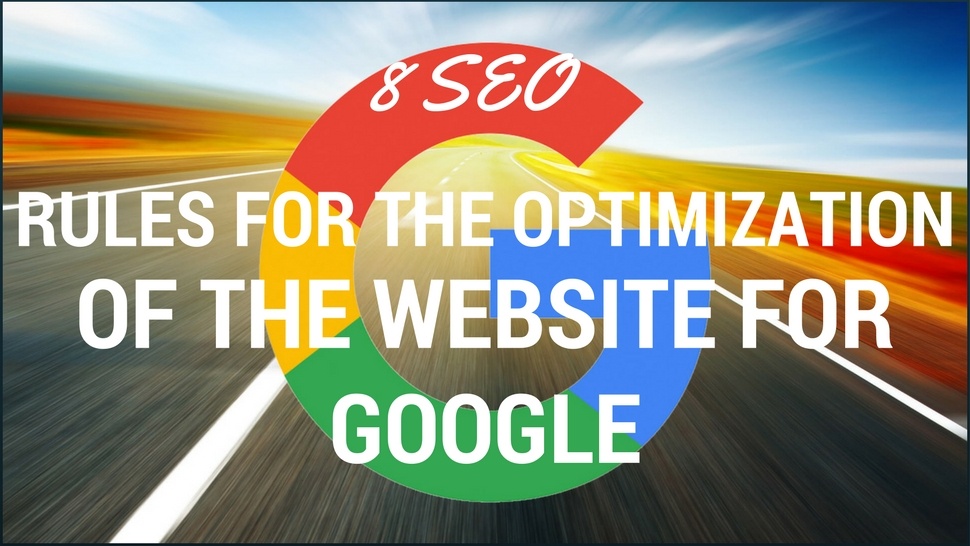The way to rank better on the search engine results page (SERP) is to apply the search engine optimization (SEO) in the right way. The most famous and most popular search engine is Google.
A better place in search results on Google means that more customers will see your site, and the description and content you offer depends on whether they will visit it. To successfully apply SEO to your site, you need to follow a few relatively easy rules, which we bring below.

1. USE KEYWORDS
Indexing of each website implies that Google, based on its own frequently changing algorithms, places it in certain groups of sites, for example, on a similar topic. This is accomplished thanks to the keywords you describe your website.
The use of keywords should be governed by some rules. First, if your company is dealing with the sale of computer equipment, you should use such keywords throughout the site - avoid content that is not related to the subject of the site. So, choose the right keywords that best bind to the job you are dealing with.
The number of keywords that will appear on the page should be tailored to both readers and Google, so as not to break away. The goal is for these keywords to appear subtly, to naturally run through the text, and to avoid strangling pages with keywords. The optimal keyword share in the text is between 2 and 4%, which means that for 1000 words, it's okay that 20-40 words are keywords.
2. QUALITY CONTENT
The content is related to the keywords because it depends on them. On a specific example, if you want to rank the website for the keyword "luxury real estate in New York", and nowhere does the site refer to such a syntagm, or is mentioned only once or twice, optimization of the SEO site for these keywords becomes meaningless.
When placing content on a site, make sure that the content is high quality, unique, written in such a way as to provide the reader with information that is truly useful and which will not be found elsewhere. Even if you use other content, whether you translate it, adapt it or use it as an inspiration, give credit to authors or the original site - by linking and signing the author.
It's very important that you do not copy yourself and do not post the same content on multiple pages on the site. This will have a bad influence on ranking on Google, because in this way, Google will not know which page is original and what to pay attention when indexing the site. If it's really necessary to set up the same content, make sure to modify it in some way.

3. NUMBER OF PAGES ON THE SITE
Depending on the type of work you are dealing with, the number of pages you have on the site will be different. The company that provides SEO services will try to explain the importance of optimization for Google through several pages, but also to provide visitors with other useful information.
Some pages will necessarily remain static and will not change or offer new content, so it's good to have a blog on the site - in this way you can steadily increase the number of pages and have the ability to regularly use keywords in the texts you publish.
4. QUALITY LINKS
Special attention should be paid to the links because they are extremely important.
First, you need to link content through the internal links. Readers will benefit from this because you will thus associate related content, and Google will easily track and link content, and hence you, and easier to put in its search directories.
Another important item is to place links to your site on other sites, which can sometimes be very difficult because linking is strictly controlled. Leaving comments on someone else's texts or forums are ways to do it, but sometimes it takes a long time to gain a reputation on the site itself to allow you to leave links.
5. SNIPPETS, TAGS, AND META DESCRIPTION
Setting up good content is just half the work - the other half is snippets, tags, and meta description. Based on them, Google will easily index new content, because it provides a short, but still a detailed insight into what you do on the site/article/blog, through snippets, tags, and meta descriptions. Although it may seem tedious, filling in these elements means that you help Google to recognize you more easily and that it will be easier to optimize your site for SEO.
In addition, meta descriptions and meta names are what will appear when a site appears in the search, so you need to keep in mind that they are written so that the visitor wants to click on the site and view the content.

6. WEBSITE SPEED
One of the key factors affecting the position of the website on the search engine is the speed of the website, which is the speed of loading and jumping from page to page. This has become even more important since is announced, and implemented, a change in the display of results relative to which device you are performing. Search on a mobile phone ranks websites according to what versions of them are for mobile phones or portable devices, and the search on the computer will yield different results.
7. CONSIDER THE AUDIENCE
The goal of the site is to connect with the audience in the right way and to provide information that the readers will be interested in visiting the site. The more visitors you have on the site, and the longer they stay on the site, the site's position on Google will be better, as a constant attendance, and a growing population, indicates that the site is alive.
It's important that you know which keywords are searched by the target group you want to attract, and use them on the site. Explore which keywords bring the audience to your site, and what are the interests of site visitors, and use it to keep them on the site and actually to return.
When you write content that is customized to users, consider the power of social networks and that modern users on social networks share much. Use it for your own benefit and provide them with the content they will want to share.
8. ANALYZE
All guidelines get the right meaning when taking a site analysis. There are many free analytics tools, and some of them are also available on free versions of the platform through which websites are set up.
Pay attention to which days you have the highest number of visits, which pages are the most popular, where visitors find your content and from which pages they come to your site, how much time they spend on your site, what keywords are searched, and what keywords were found on your site. All this, and many other issues provide you with a meaningful insight into what's significant to users, and these are the best guidelines that you need to guide when implementing an SEO strategy.
Follow me on Twitter - @SrdjanKali.




Share the News